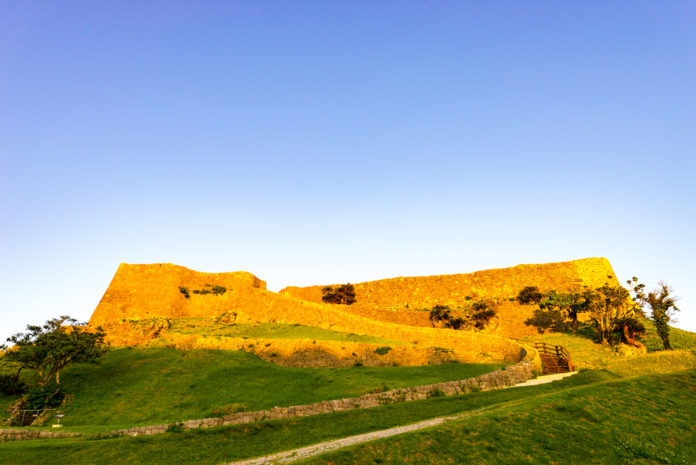Two UNESCO World Heritage Sites in Japan have joined Kyoto’s Nijo Castle in welcoming private events in a bid to offer MICE planners a greater variety of unique spaces.
Kagoshima’s Sengan-en traditional gardens, which is attached to a former Shimazu clan residence, set up a MICE office in April to reach out to MICE buyers. The gardens are ideal for small-szied events. On its grounds are a traditional teahouse that can accommodate 100 guests for a tea ceremony and a 400-seat restaurant specialising in dishes using Kagoshima ingredients.

Katsuren Castle ruins
Sengan-en also lends itself to demonstrations of Japanese culture, ranging from traditional dance and martial arts through music recitals. It once hosted a Louis Vuitton event, with a runway laid down for a fashion show.
Okinawa’s 13th-century Katsuren Castle has been made available as a MICE venue through Uruma City Tourism and Products Association. By coordinating the use of the site as a MICE venue, the local association aims to offer experiences tailored to each group’s needs, as well as protect the site’s historical and cultural assets.
Kentaro Suzuki, executive director of the Uruma City Tourism Association, said “the historic spot touches visitors’ hearts as a unique venue.”
Groups of up to 200 people can enjoy dining and entertainment in the third enclosure, the inner part of the castle. Performances on offer include the Eisa, Lion and Ryukyu dances, which honour ancestors, drive away evil spirits and express love, respectively. Another option for event planners is the musical, Kimutaka no Amawari, which is performed by local junior and high school students as part of a project to support youth, promote cross-generational work and revitalise the area, according to Suzuki.
Meanwhile, Nijo Castle which began welcoming MICE groups in 2014 is looking to make more venues within, such as Ninomaru Palace, available to event planners.
An advisory panel to the Kyoto city government has recommended that more effective use be made of the castle, particularly given the expense of protecting the castle and conducting restoration work.
The city has committed 10 billion yen (S$97 million) over the next 24 years to restoration works but needs to find new revenue sources to cover those costs.
“We are considering opening other parts of the castle to promote understanding of our cultural properties and to provide a source of income for renovation works,” said Masahiro Hirade, who is with the MICE division of the Kyoto City Culture and Citizens Affairs Bureau.
Nijo Castle’s Ninomaru Palace was used in mid-October to host an exhibition related to the World Forum on Sport and Culture. Hirade hopes the history and design of the palace would attract MICE buyers as soon as the proposal is approved.
It is likely that rooms in the palace can be used for concerts and demonstrations of traditional Japanese culture, as well as banquets or parties, Hirade opined.
“But we do need to hold discussions before we open the palace to MICE users because it is the most important building in the castle,” he added.
Experts have said that priceless ceiling paintings will likely have to be replaced with replicas to protect the originals.
This article is written by Julian Ryall and Kathryn Wortley





















